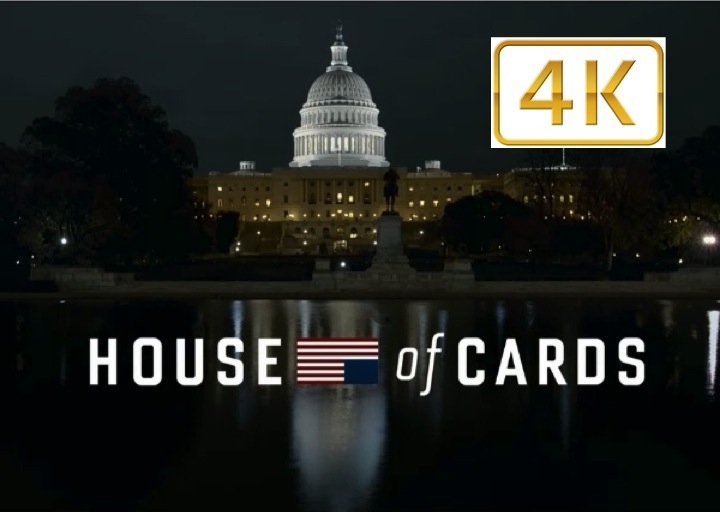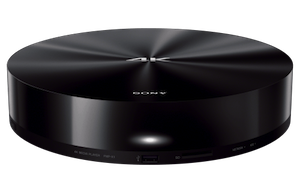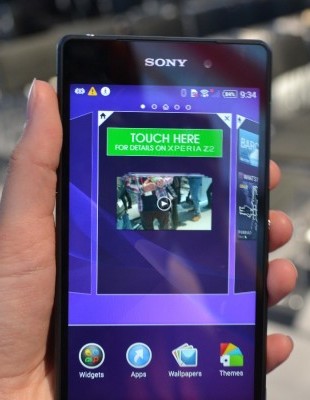What Is HEVC?
You may not know the term HEVC, but if you are interested in streaming video and in 4K televisions, you will soon see its results.

If you've ever watched a DVD or Blu-ray, caught up with a show using an on-demand service, streamed a film with Netflix or laughed at the latest viral video, you have benefited from a video codec. Thistechnologycompresses a video file into a smaller package, making it easier to store or transmit. The next generation of codecs — including a technology called HEVC — will make several things possible or easier to do. The most notable of these is streaming 4K, aka Ultra HD video.
What is HEVC?
HEVC stands for high-efficiencyvideocoding. Also known as H.265, this new video codec will compress video files to half the size possible using the most-efficient current encoding format, MPEG-4, aka H.264 (used on Blu-ray discs and some satellite TV broadcasts). That will be one-quarter the size of files compressed using the MPEG 2 codec that most cable-TV companies still employ. More importantly, HEVC is used to compress video with 4K resolution — and possibly even 8K resolution in the future — so it can be efficiently delivered.
MORE: TV Buying Guide 2014
What is a codec?

A codec (an abbreviation of the term "coder-decoder") is software that uses an algorithm to systematically compress raw videodatainto a compact form fit for broadcasting, transmitting over an Internet stream or storing on a Blu-ray disc, for example. At the receiving end, the same codec in your TV, computer or disc player uncompresses the data to display the video on your screen. Codecs also remove some detail from video to reduce its size, and a high level of compression can drop too much data, resulting in choppy and blocky video. Most pay-TV services use aggressive compression to get all those channels into your cable or satellite receiver, which is one reason the video from your cable box does not look as good as that from a Blu-ray. A good codec will compress video while causing few defects due to overcompression.
High-definition video can take a lot of data. A full-HD image has about 2 million pixels and up to several million colors per individual frame, with hundreds of thousands of frames making up a movie.
Why use HEVC for 4K video?
The current MPEG-4/H.264 codec makes it possible to compress the huge amount of information in a film so that it can stream over Netflix, rather than storing all of that data on a physical source like a Blu-ray. Those high-definition images from Netflix are in either 720p resolution (1280 x 720, or 0.92 million pixels per frame) or 1080p resolution (1920 x 1080 resolution, 2 million pixels). The images from a 4K video that Netflix is now streaming to 4K televisions have 8 million pixels (3840 x 2160 resolution). Such a huge jump in detail requires a better way to compress the data in order to transmit or store it. HEVC is twice as efficient as MPEG-4/H.264, and experiences only a minimal loss in quality. As a result, current content will need only half the data to stream over Netflix, and it will become viable to stream 4K content. (Netflix recommends a 15 Mbps or better broadbandconnectionfor streaming 4K.)

What content will use HEVC?
Potentially everything. Each service will have to decide if it will send data using HEVC/H.265 instead of MPEG-4/H.264 or MPEG-2. Netflix has already begun using HEVC to stream 4K content to the few 4K TVs equipped to decode HEVC. New televisions coming this year from LG, Samsung, Sony and Vizio will support HEVC and will be able to stream 4K video from Netflix. Though they haven't mentioned Netflix deals, both Panasonic and Toshiba have announced that their new 4K TVs willalso support HEVC.
Amazon has been filming all of its original content, such as political comedy "Alpha House," in 4K. The company also has partnered with several studios for 4K streaming using HEVC, including Warner Bros., Lionsgate, 20th Century Fox and Discovery. Amazon hasn't announced when it will offer streams or downloads of these videos as 4K via Amazon Prime Instant Video, though Samsung is the first partner that will have 4K-capable Amazon Prime Instant Video on its televisions.
Streaming service M-Go has announced it will be offering 4K video via HEVC soon, including via an app for Samsung televisions. Individual cable companies will have to decide when to change both the data they are sending and the receiver to decode it to HEVC. But that likely won't happen for several years, if and when they broadcast in 4K. Though they aren't broadcasting in 4K yet, DirecTV and Comcast's Xfinity will have 4K apps to stream video over the Internet to Samsung televisions.

Most current cellphones and tablets don't have hardware compatible with HEVC, but some new devices are starting to support it. The new Sony Xperia Z2 smartphone, for example, supports HEVC to shoot 4K video.
But that doesn't mean all mobile devices will eventually support HEVC. For instance, Google has announced its own 4K codec, called VP9, that will be used with YouTube. Other companies may support that, or possibly both 4K codecs.
MORE: Where can you get 4K video?
Can I watch HEVC content now?
Yes, if you have the right hardware. Newer televisions support 4K video via HEVC, though these TVs have limited 4K content.
Sony offers its Ultra HD Media Player, a $700 4K video player that uses HEVC, which downloads content to a 2TB hard drive and is compatible only with Sony televisions. You can purchase or rent new content via Sony's 4K version of its Video Unlimited online service, and download films like "The Amazing Spider-Man" and shows like" Breaking Bad" (both made by Sony Pictures). Films cost about $30 to buy and $8 to rent (for 24 hours) and take up about 40GB; television episodes are available to purchase for $4 each. There are currently about 80 films available.
Samsung will soon release the $300 CY-SUC105H UHD video pack to watch 4K content created with HEVC. This 1TB hard drive will also feature unannounced documentaries and vignettes, as well as five films from Paramount and 20th Century Fox: "G.I. Joe: Retaliation," "World War Z," "Night at the Museum," "X-Men Origins: Wolverine" and "The Counselor." The company said additional video packs will be released.
How did HEVC come about?
Two tech-standards organizations, the International Telecommunication Union (ITU) and the Moving Pictures Expert Group (MPEG), developed HEVC. These same groups are also behind the MPEG-2 standard used in DVD, cable and other content formats for standard- and some high-definition video. ITU and MPEG also created the MPEG-4/H.264 standard used in Blu-ray, some cable satellite broadcasts and high-definition online video.
Follow Kevin Ohannessian at @khohannessian and on Google+. Follow us @tomsguide, on Facebookand on Google+.
Sign up to get the BEST of Tom's Guide direct to your inbox.
Get instant access to breaking news, the hottest reviews, great deals and helpful tips.
Kelly Ohannessian is a freelance writer and editor. With more than 15 years of experience, she works with a focus on covering the creative aspects of the gaming industry. Her articles have appeared on Medium, Fast Company, Tom's Guide, Laptop Mag, Gamespot, and many more. Currently, she works as a manager at Brooklyn Game Lab.
-
ThatMouse Right I'm watching an HEVC video right now using VLC. The first one I've ever seen. It's only 1080p, but a transfer from an old 35mm/4k digitized source. We will be getting all those old film movies in 4k. Very grainy, but might be cool to watch. I'm sure this decoder will be included in the latest codec packs if not already.Reply -
WyomingKnott "this new video codec will compress video files to half the size possible." Wow, it encodes it smaller than possible. Impressive.Reply -
Darthmullet Wondering how to get HEVC on my PC, and if that will enable 4k streaming from Netflix without using their specific Smart TVs, as my monitor is not on the list.Reply
Seems pointless as today I found out that supposedly they cap streams at 480p for Windows 7 users.
I'd think it would be a simple firmware update, but I don't have much faith in streaming services.
